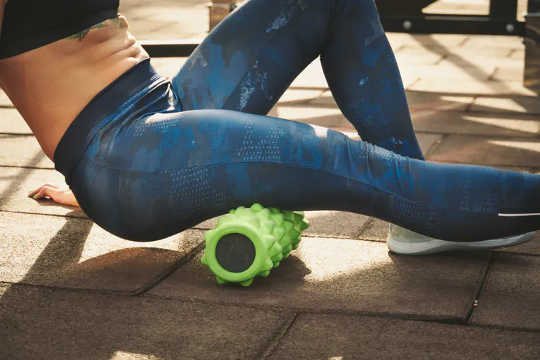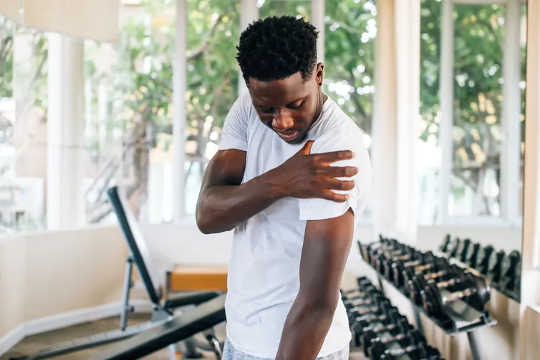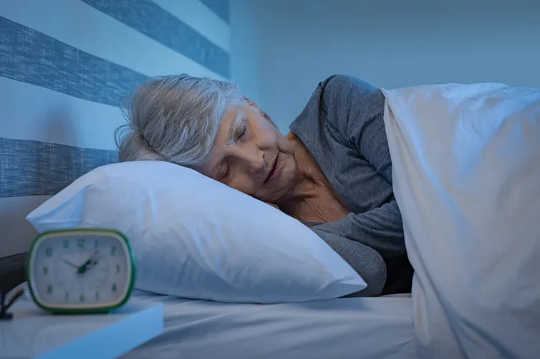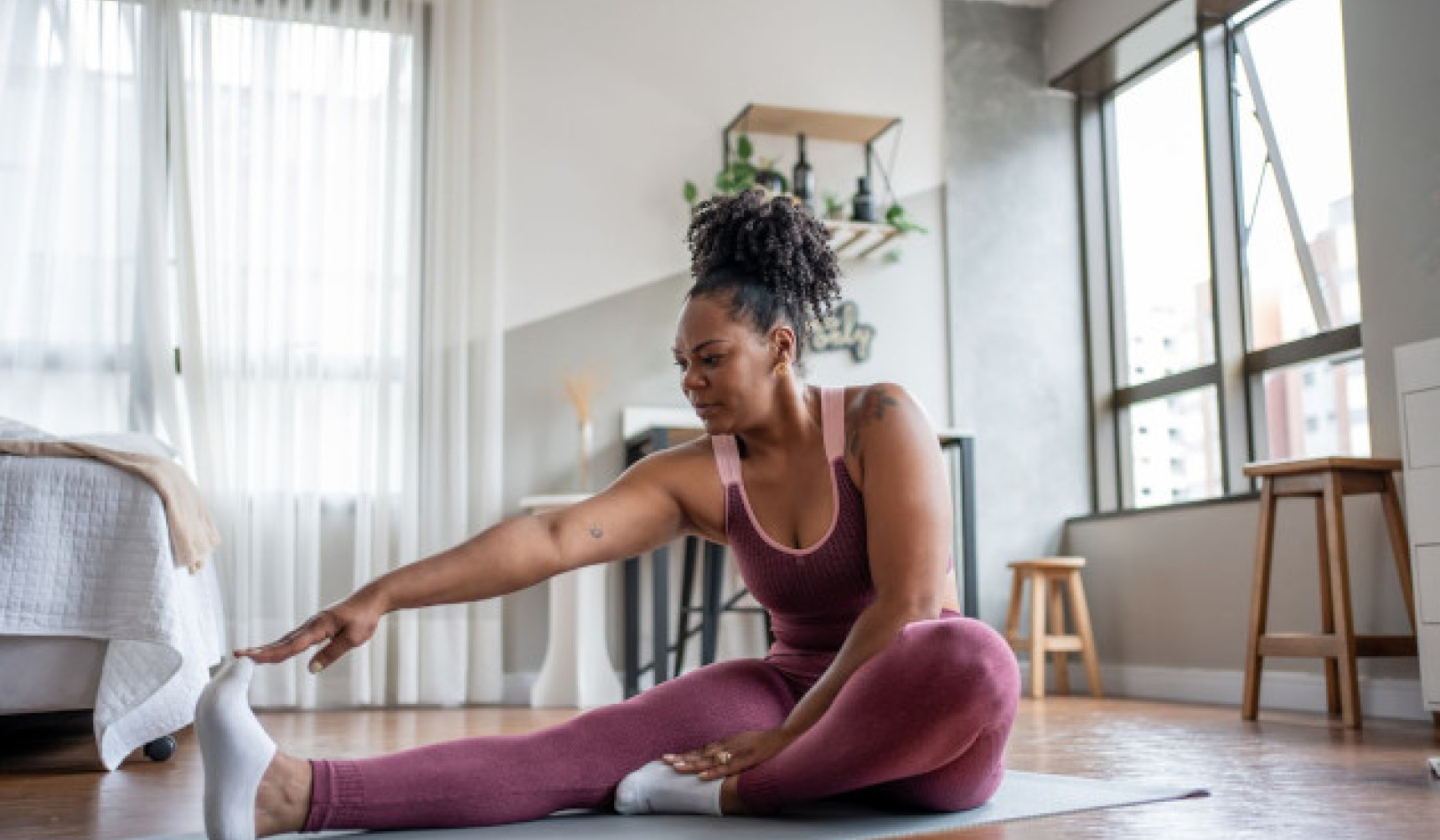
Shutterstock
Have you been hitting the gym again with COVID restrictions easing? Or getting back into running, cycling, or playing team sports?
As many of you might’ve experienced, the inevitable muscle soreness that comes after a break can be a tough barrier to overcome.
Here’s what causes this muscle soreness, and how best to manage it.
What is muscle soreness and why does it occur?
Some muscle soreness after a workout is normal. But it can be debilitating and deter you from further exercise. The scientific term used to describe these aches is delayed onset muscle soreness, or DOMS, which results from mechanical disruption of the muscle fibres, often called “microtears”.
This damage causes swelling and inflammation in the muscle fibres, and the release of substances that sensitise the nerves within the muscle, producing pain when the muscle contracts or is stretched.
This pain usually peaks 24-72 hours after exercise. The type of exercise that causes the most muscle soreness is “eccentric” exercise, which is where force is generated by the muscle as it lengthens — think about walking downhill or the lowering phase of a bicep curl.

Soreness in the days after exercise is normal, and actually results in stronger muscles. Shutterstock
There’s good news about this pain though. When the muscle cell recovers from this “microtrauma”, it gets stronger and can produce that force again without the same damage occurring. So although this strengthening process is initially painful, it’s essential for our body to adapt to our new training regime.
The inflammatory component of this process is necessary for the muscle tissue to strengthen and adapt, therefore the repeated use of anti-inflammatory medication to manage the associated pain could be detrimental to the training effect.
Will recovery gadgets put me out of my misery? Not necessarily
Before we even think about recovery from exercise, you first need to remember to start slow and progress gradually. The body adapts to physical load, so if this has been minimal during lockdown, your muscles, tendons and joints will need time to get used to resuming physical activity. And don’t forget to warm up by getting your heart rate up and the blood flowing to the muscles before every session, even if it’s a social game of touch footy!
Even if you do start slow, you may still suffer muscle soreness and you might want to know how to reduce it. There are heaps of new recovery gadgets and technologies these days that purport to help. But the jury is still out on some of these methods.
Some studies do show a benefit. There have been analyses and reviews on some of the more common recovery strategies including ice baths, massage, foam rollers and compression garments. These reviews tend to support their use as effective short-term post-exercise recovery strategies.
So, if you have the time or money — go for it! Make sure your ice baths are not too cold though, somewhere around 10-15? for ten minutes is probably about right.
And a word of caution on ice baths, don’t become too reliant on them in the long term, especially if you are a strength athlete. Emerging research has shown they may have a negative effect on your muscles, blunting some of the repair and rebuilding processes following resistance training.
But the efficacy of other recovery strategies remain unclear. Techniques like recovery boots or sleeves, float tanks and cryotherapy chambers are newer on the recovery scene. While there have been some promising findings, more studies are required before we can make an accurate judgement.
However, these recovery gadgets all seem to have one thing in common: they make you “feel” better. While the research doesn’t always show physical benefits for these techniques or gadgets, often using them will result in perceived lower levels of muscle soreness, pain and fatigue.
Is this just a placebo effect? Possibly, but the placebo effect is still a very powerful one — so if you believe a product will help you feel better, it probably will, on some level at least.
The ‘big rocks’ of recovery
Some of the above techniques could be classified as the “one-percenters” of recovery. But to properly recover, we need to focus on the “big rocks” of recovery. These include adequate sleep and optimal nutrition.
Sleep is one of the best recovery strategies we have, because this is when most of the muscle repair and recovery takes place. Ensuring a regular sleep routine and aiming for around eight hours of sleep per night is a good idea.

Ultimately, adequate sleep and optimal nutrition are the best ways to recover after exercise. Shutterstock
When it comes to nutrition, the exact strategy will vary from person to person and you should always seek out nutrition advice from a qualified professional, but remember the three R’s:
-
refuel (replacing carbohydrates after exercise)
-
rebuild (protein intake will aid in the muscle repair and rebuilding)
-
rehydrate (keep your fluid intake up, especially in these summer months!).
Enjoy your newfound freedom when returning to sport and exercise, but remember to focus on a slow return, and to make sure you’re eating and sleeping healthily before spending your hard-earned cash on the hyped-up recovery tools you may see athletes using on Instagram.
About the Authors
Andrea Mosler, Post-Doctoral Research Fellow, Sport and Exercise Medicine Research Centre, La Trobe University and Matthew Driller, Associate Professor, Sport and Exercise Science, La Trobe University
This article is republished from The Conversation under a Creative Commons license. Read the original article.
Books on Exercise from Amazon's Best Sellers list
The Four-Pack Revolution: How You Can Aim Lower, Cheat on Your Diet, and Still Lose Weight and Keep It Off
by Chael Sonnen and Ryan Parsons
The Four-Pack Revolution presents a total-life approach for attaining health and fitness goals without the hard work and suffering.
Click for more info or to order
Bigger Leaner Stronger: The Simple Science of Building the Ultimate Male Body
by Michael Matthews
If you want to build muscle, lose fat, and look great as quickly as possible without steroids, good genetics, or wasting ridiculous amounts of time in the gym and money on supplements, then you want to read this book.
Click for more info or to order
The Women's Health Big Book of Exercises: Four Weeks to a Leaner, Sexier, Healthier You!
by Adam Campbell
The Women's Health Big Book of Exercises is the essential workout guide for anyone who wants a better body. As the most comprehensive collection of exercises ever created, this book is a body-shaping power tool for both beginners and longtime fitness buffs alike.
Click for more info or to order
Bodyweight Strength Training Anatomy
by Bret Contreras
In Bodyweight Strength Training Anatomy, author and renowned trainer Bret Contreras has created the authoritative resource for increasing total-body strength without the need for free weights, fitness machines, or even a gym.
Click for more info or to order
The Men's Health Big Book of Exercises: Four Weeks to a Leaner, Stronger, More Muscular You!
by Adam Campbell
The Men's Health Big Book of Exercises is the essential workout guide for anyone who wants a better body. As the most comprehensive collection of exercises ever created, this book is a body-shaping power tool for both beginners and longtime fitness buffs alike.

























